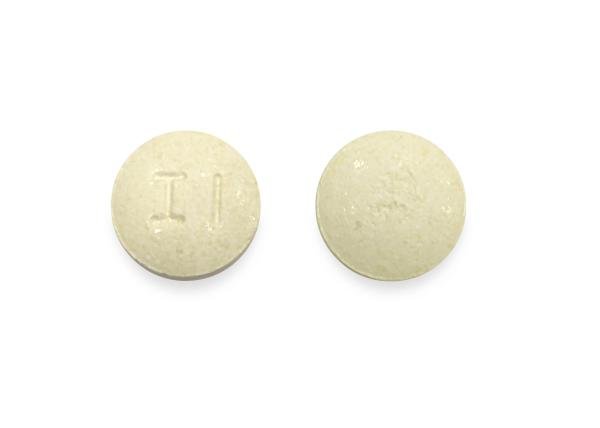Sapropterin Dosage
Medically reviewed by Drugs.com. Last updated on Jun 13, 2025.
Applies to the following strengths: 100 mg; 500 mg
Usual Adult Dose for:
Usual Pediatric Dose for:
Additional dosage information:
Usual Adult Dose for Phenylketonuria
Initial dose: 10 to 20 mg/kg orally once a day
- Blood phenylalanine (Phe) levels should be measured after 1 week, and then periodically; dose should be increased to 20 mg/kg/day if blood Phe levels have not decreased
Non-Responders:
- Patients whose phenylalanine levels do not decrease with treatment at 20 mg/kg/day for 1 month should be considered non-responders and treatment should be discontinued.
Comments:
- This drug should be used in conjunction with a phenylalanine-restricted diet.
- Existing dietary protein and Phe intake should not be modified during the evaluation period
- Response to therapy is determined by change in blood phenylalanine levels.
Use: To reduce blood phenylalanine levels in patients with hyperphenylalaninemia due to tetrahydrobiopterin- (BH4-) responsive phenylketonuria (PKU).
Usual Pediatric Dose for Phenylketonuria
1 month to 6 years:
- Initial dose: 10 mg/kg orally once a day
7 years or older:
- Initial dose: 10 to 20 mg/kg orally once a day
- Measure blood phenylalanine levels after 1 week, and then periodically; dose should be increased to 20 mg/kg/day if blood phenylalanine levels have not decreased
Non-Responders:
- Patients whose phenylalanine levels do not decrease with treatment at 20 mg/kg/day for 1 month should be considered non-responders and treatment should be discontinued.
Comments:
- This drug should be used in conjunction with a phenylalanine-restricted diet.
- Existing dietary protein and Phe intake should not be modified during the evaluation period
- Response to therapy is determined by change in blood phenylalanine levels.
Use: To reduce blood phenylalanine levels in patients with hyperphenylalaninemia due to tetrahydrobiopterin- (BH4-) responsive phenylketonuria (PKU).
Renal Dose Adjustments
Data not available
Liver Dose Adjustments
Data not available
Precautions
CONTRAINDICATIONS:
- None
Safety and efficacy have not been established in patients younger than 1 month.
Consult WARNINGS section for additional precautions.
Dialysis
Data not available
Other Comments
Administration advice:
- Take with a meal to increase absorption, preferably at the same time each day
Tablets:
- Swallow whole; dissolve in water or apple juice and consume; or crush tablets and mix with a small amount of soft food such as apple sauce or pudding and consume
- To dissolve: Place whole, or to speed up process, crushed tablets in 120 to 240 mL of water or apple juice; stir until dissolved (it may take a few minutes for tablets to dissolve and tablets may not completely dissolve)
- Consume tablet solution orally within 15 minutes of dissolution; if any pieces of tablet remain, add additional water or apple juice, stir, and take orally, repeat until all of the tablet is consumed
Powder for Oral Solution:
- Dissolve powder for oral solution in 120 to 240 mL of water or apple juice and take within 30 minutes of dissolution
- Powder for oral solution may also be stirred in a small amount of soft food such as apple sauce or pudding and consumed
- Patients weighing less than 10 kg: Package Labeling may be consulted for dose chart
- Dissolve oral solution in as little as 5 mL of water or apple juice and provide a portion of solution corresponding daily dose via an oral dosing syringe
Missed dose: Take as soon as possible; do not take 2 doses on the same day
Storage requirements:
- Protect from moisture
General:
- Therapy should be directed by physicians knowledgeable in the management of phenylketonuria (PKU).
- All patients should be receiving a phenylalanine-restricted diet.
Monitoring:
- Gastrointestinal: Signs of gastritis
- Metabolic: Blood Phe levels (during therapy; frequently in pediatric patients)
- Nervous system: For hyperactivity
Patient advice:
- Patients/caregivers should be instructed to read the FDA-approved patient labeling (Patient Information and Instructions for Use).
- Patients/caregivers should understand this drug must be used in conjunction with a phenylalanine-restricted diet; they should be informed of the consequences of increased or decreased phenylalanine blood concentrations.
- Patients/caregivers should understand that they will need blood tests to determine if this drug is working for them and to maintain phenylalanine levels in the desired range.
- Patients/caregivers should be instructed to notify their healthcare provider if they experience gastritis, hyperactivity, or any new symptoms.
- Patients/caregivers should be instructed to speak with their healthcare provider before starting any new medications.
- Patients who are pregnant or interested in becoming pregnant should speak with their healthcare provider.
More about sapropterin
- Check interactions
- Compare alternatives
- Pricing & coupons
- Drug images
- Latest FDA alerts (1)
- Side effects
- During pregnancy
- Drug class: miscellaneous metabolic agents
- Breastfeeding
- En español
Patient resources
Other brands
Professional resources
Other brands
Related treatment guides
See also:
Further information
Always consult your healthcare provider to ensure the information displayed on this page applies to your personal circumstances.


